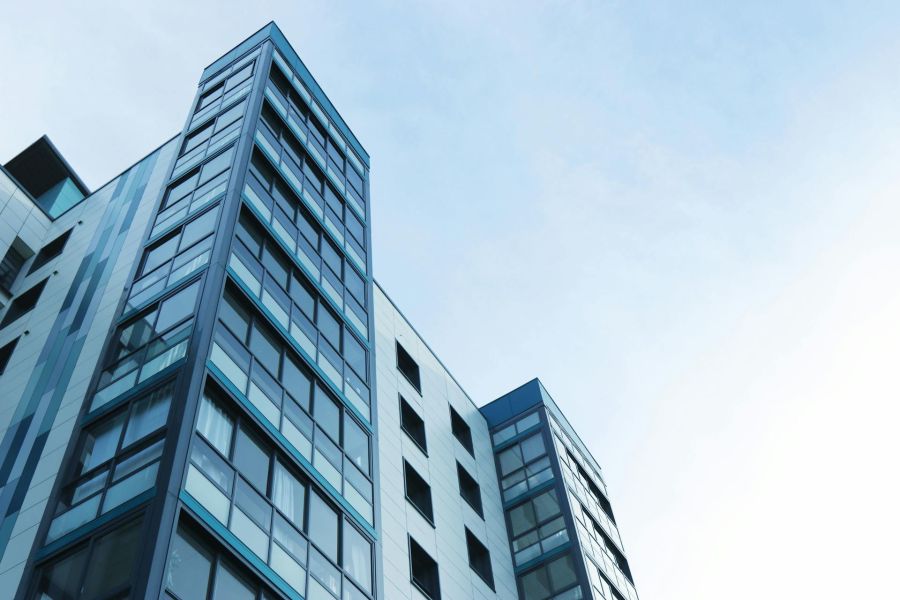When it comes to the architecture and construction of tall and complex buildings, one material that stands out in terms of providing strength and durability is steel. Among the many elements that contribute to the structural integrity of these buildings, steel columns play a crucial role. Steel columns provide the foundation needed to support the immense weight of high-rise structures and complex designs, making them a key component in modern construction. This blog post will explore the importance of steel columns in supporting tall and complex buildings, their advantages, and the factors to consider when choosing the right steel columns for a project.

The Role of Steel Columns in Tall Structures
Steel columns are essential in tall buildings, providing the necessary support to bear immense loads and maintain structural stability. These columns transfer weight from the upper floors down to the foundation, ensuring the entire structure remains secure. Among the most commonly used steel columns, H-Beams stand out due to their superior strength and load-bearing capacity, making them ideal for high-rise construction. Their wide flanges offer excellent resistance against bending and compression, enhancing the building’s overall stability. Additionally, steel columns can withstand external forces such as wind and seismic activity, ensuring durability and safety. Without these critical components, modern skyscrapers and complex structures would not be feasible.
Steel’s Strength and Durability
One of the main reasons steel is favored for columns in high-rises is its strength and durability. Steel has a remarkable strength-to-weight ratio, meaning it can withstand a tremendous amount of force without being too heavy. This makes it an ideal material for supporting the heavy loads of tall buildings, including the weight of the structure itself and the external forces acting upon it, such as wind or seismic activity. Steel columns are also highly resistant to corrosion, rust, and other environmental factors, making them a durable choice for long-lasting buildings. In addition, steel can be shaped into various forms, offering flexibility in design without compromising strength.
Flexibility in Design and Engineering
Steel columns offer unparalleled flexibility in both design and engineering. Architects and engineers can customize the size, shape, and configuration of steel columns to suit the specific requirements of the building. This flexibility allows for the creation of more complex and innovative building designs that would be difficult or impossible to achieve with other materials. Steel columns can be integrated into various structural systems, such as moment-resisting frames, braced frames, or shear walls, providing multiple options for supporting different building layouts. Furthermore, steel’s malleability allows for the integration of aesthetic design features without sacrificing performance, making it possible to combine functionality with architectural appeal.
Efficient Construction with Steel Columns
Another advantage of steel columns is their ability to speed up the construction process. Steel is prefabricated in a controlled environment before being transported to the site, which helps reduce delays due to weather or other on-site challenges. The precision of prefabrication ensures that the columns fit together correctly, reducing the need for adjustments or repairs during the construction process. The use of steel columns also reduces the amount of material wastage compared to traditional construction methods, as steel is more efficient in terms of weight distribution and strength. As a result, the overall construction timeline is shortened, leading to a more efficient building process.
Cost-Effectiveness of Steel Columns
While the initial cost of steel columns may be higher than other materials, such as wood or concrete, their long-term cost-effectiveness is undeniable. Steel columns have a longer lifespan, require less maintenance, and are highly resistant to damage, making them a more economical choice over time. The durability and minimal maintenance costs of steel structures result in lower operational expenses for the building’s owners. Additionally, steel’s ability to support complex, multi-story designs can lead to better use of space and reduce the need for additional structural elements, thus optimizing the cost-efficiency of the entire building.
Resistance to Seismic and Wind Forces
In areas prone to earthquakes or extreme weather conditions, steel columns provide an essential benefit—resistance to seismic and wind forces. Steel’s flexibility allows it to absorb and dissipate energy from earthquakes or strong winds, minimizing the risk of structural failure. Steel columns can be engineered to meet seismic building codes, ensuring that tall buildings in earthquake-prone regions remain safe and stable. Similarly, steel’s ability to withstand high winds makes it an ideal choice for tall buildings located in areas susceptible to hurricanes or tornadoes. This resistance to external forces enhances the safety of occupants and ensures the longevity of the structure.

Steel columns are indispensable in the construction of tall and complex buildings due to their strength, flexibility, durability, and ability to withstand various external forces. They provide the necessary support for modern structures while offering benefits such as efficient construction, cost-effectiveness, and sustainability. By incorporating steel columns into building designs, architects and engineers can ensure that their structures are safe, stable, and able to withstand the test of time. Whether supporting a sleek skyscraper or a complex architectural masterpiece, steel columns remain a vital component in the construction industry.

Founder Dinis Guarda
IntelligentHQ Your New Business Network.
IntelligentHQ is a Business network and an expert source for finance, capital markets and intelligence for thousands of global business professionals, startups, and companies.
We exist at the point of intersection between technology, social media, finance and innovation.
IntelligentHQ leverages innovation and scale of social digital technology, analytics, news, and distribution to create an unparalleled, full digital medium and social business networks spectrum.
IntelligentHQ is working hard, to become a trusted, and indispensable source of business news and analytics, within financial services and its associated supply chains and ecosystems


























